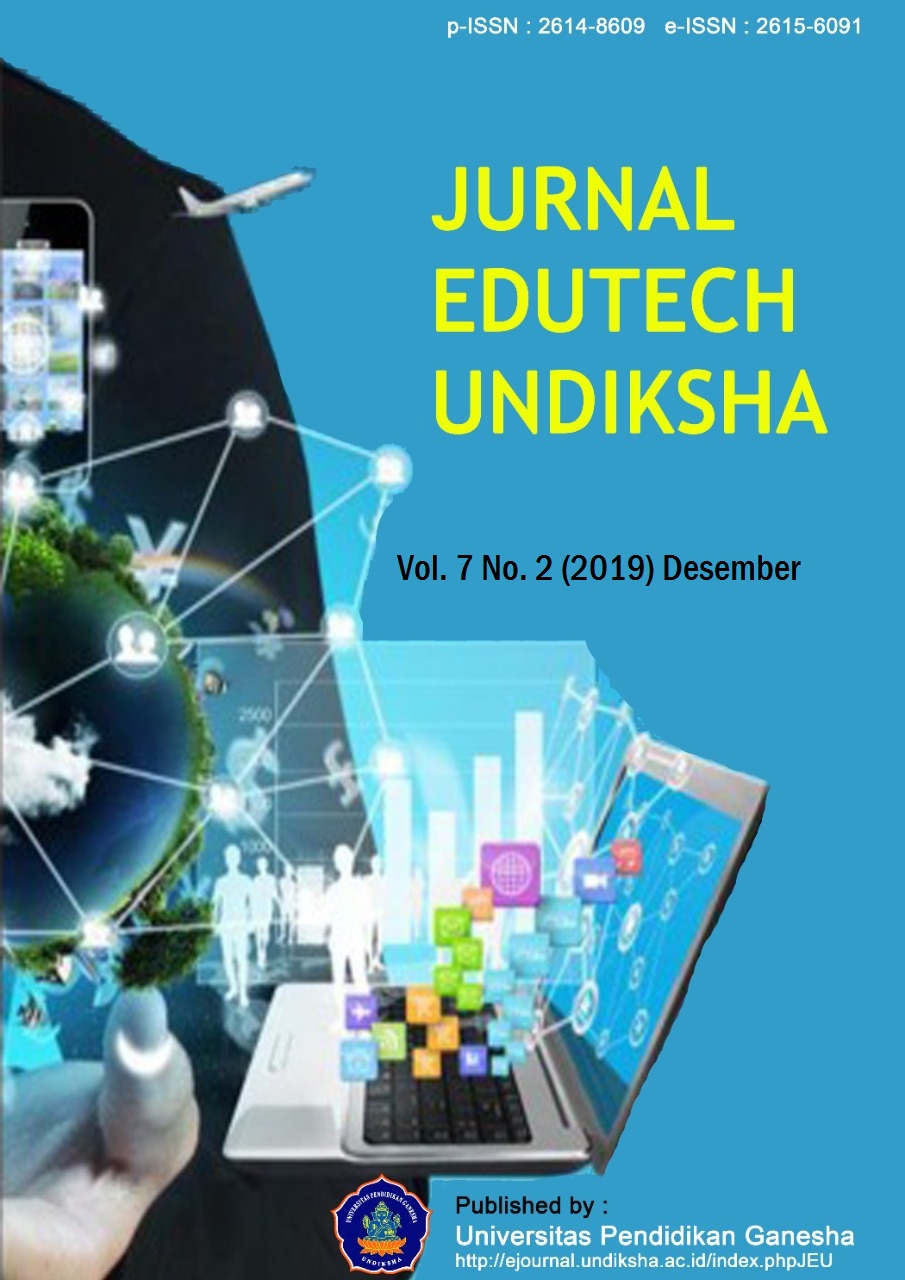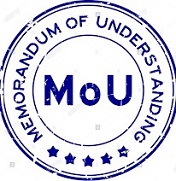PENGEMBANGAN MEDIA PUZZLE BERBASIS MAKE A MATCH PADA PEMBELAJARAN TEMATIK KELAS 2 DI MADRASAH IBTIDAIYAH
DOI:
https://doi.org/10.23887/jeu.v7i2.21830Abstract
Abstrak
Permasalahan yang terjadi pada kelas II di Madrasah Ibtidaiyah adalah sumber belajar yang digunakan hanya menggunakan LKS dan buku paket. Selain itu, belum ada pengembangan media sederhana maupun media lainnya yang mendukung proses pembelajaran sehingga mengakibatkan rendahnya hasil belajar siswa pada mata pelajaran Matematika dan Bahasa Indonesia. Rata-rata hasil pretest hasil belajar siswa 58.2 dari nilai maksimal 60. Penelitian ini bertujuan untuk mengetahui efektivitas media puzzle berbasis make a match pada pembelajaran tematik. Penelitian ini merupakan penelitian pengembangan. Model pengembangan yang digunakan yaitu model ADDIE. Metode pengumpulan data yang digunakan, yaitu: metode observasi, wawancara, kuesioner, dan tes. Analisis data menggunakan analisis deskriptif kualitatif, kuantitatif, dan statistik inferensial (uji-t). subjek dalam penelitian ini adalah 25 orang siswa kelas II di Madrasah Ibtidaiyah. Dalam pengembangan media puzzle berbasis make a match ini validitas media berdasarkan penilaian ahli isi mata pelajaran 92%, ahli desain pembelajaran 81%, ahli media pembelajaran 92%, uji perorangan 91%, uji kelompok kecil 96%, dan uji coba lapangan 96%. Hasil uji efektivitas yang di analisis dengan teknik statistik inferensial (uji-t) mendapatkan hasil rata-rata pretest (58,2) < hasil rata-rata posttes (86). Setelah dilakukan perhitungan secara manual dengan menggunakan uji-t diperoleh thitung = 11,59 untuk db = 25 dan taraf signifikan 5% ttabel = 2.011 sehingga H0 ditolak dan H1 diterima, karena nilai posttest lebih tinggi dibandingkan dengan nilai pretest. Dengan demikian dapat disimpulkan bahwa dengan menggunakan media puzzle berbasis make a match dapat meningkatkan hasil belajar matematika dan bahasa Indonesia kelas II di Madrasah Ibtidaiyah.
Problems that occurred in grade II at Madrasah Ibtidaiyah were learning resources that only using worksheets and textbooks. In addition, there had not been a development of simple media or others that supported the learning process, resulting student’s low learning outcomes in Mathematics and Bahasa Indonesia subject. The average pretest resulted student’s learning outcomes was 58.2 out of a maximum score that was 60. This study aimed to determine the effectiveness of puzzle which based on make a match media on thematic learning. This research was a research development. The development model used was the ADDIE model. The data collection methods used, were: the method of observations, interviews, questionnaires, and tests. Data analysis used descriptive qualitative, quantitative, and inferential statistics. The subjects in this study were 25 students of grade II at Madrasah Ibtidaiyah. In this development of make a match based puzzle media was the validity of the media which based on the judgment of assessment expert with 92%, 81% learning design expert, 92% learning media expert, 91% individual test, 96% small group test, and 96% field trial. The results of the effectiveness tests were analyzed by inferential statistical techniques (t-test) obtained an average pretest result (58.2) and < posttest average results (86). After doing the manual calculations using the t-test obtained tcount = 11.59 for db = 25 and a significance level of 5% ttable = 2.011 so that H0 was rejected and H1 was accepted. So puzzle media are effectively used on thematic learning at madrasah ibtidaiyah.
Downloads
Published
How to Cite
Issue
Section
License
Authors who publish with the Jurnal EDUTECH Undiksha agree to the following terms:
- Authors retain copyright and grant the journal the right of first publication with the work simultaneously licensed under a Creative Commons Attribution License (CC BY-SA 4.0) that allows others to share the work with an acknowledgment of the work's authorship and initial publication in this journal.
- Authors are able to enter into separate, additional contractual arrangements for the non-exclusive distribution of the journal's published version of the work (e.g., post it to an institutional repository or publish it in a book), with an acknowledgment of its initial publication in this journal.
- Authors are permitted and encouraged to post their work online (e.g., in institutional repositories or on their website) prior to and during the submission process, as it can lead to productive exchanges, as well as earlier and greater citation of published work. (See The Effect of Open Access)








